SA’s most influential landscape designers share their favourite projects and trends for 2022
Looking to make a splash at home? Meet the Adelaide landscape architects and designers whose work will make you green with envy. They share their favourite projects and trends for 2022.

Lifestyle
Don't miss out on the headlines from Lifestyle. Followed categories will be added to My News.
Covid scuttled our travel plans and marooned many of us on our own little islands at home.
Rather than flicking through holiday brochures we’ve had ample time to reflect on how we live inside and outside our homes.
Backyards with space to stretch the legs and sit under a tree have been particularly important when many of us were forced, and then chose, to work from home.
These unforeseen trends have kept SA’s landscape designers and architects very busy as people look for ways to make their outdoor spaces beautiful and functional.
We asked some of the best, most influential, most exciting experts in the space to share their favourite projects, reveal the landscaping trends and the importance of home gardens and the great outdoors in light of climate change and a post-pandemic era.
JAMES HAYTER, Oxigen
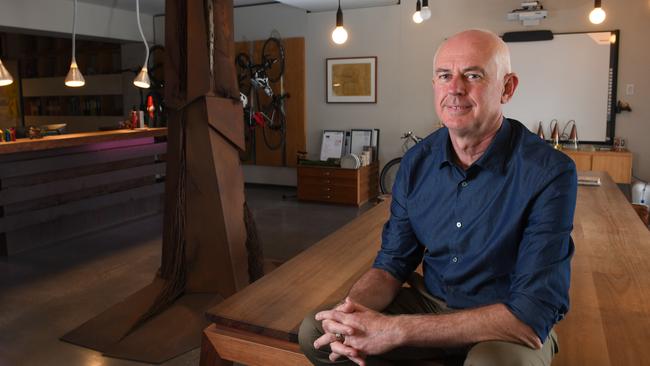
What drew you to the industry?
My initial training was in architecture, but I could not see, at least then, how nature and design talk to each other, how each is an exchange that shares many commonalities relating to discipline and order. I like the time dimension in landscape architecture. Landscapes develop and change in time, just like our own needs change as we get older and our circumstances change. I see the opportunity for great creativity in landscape architecture and a flexibility and emotion that I feel very comfortable with.
What do you most love about your work?
Truly believing that I’m contributing towards a safer, more inclusive and healthier environment. Landscape architecture is a profession that is expanding in its scope and influence as the community, and governments that represent them, call for climate action and sustainable environmental approaches to development. Communities expect our environments to be developed and managed in ways that contribute towards the quality of life and that are safe and healthy to live in. Landscape architecture is all that. More so, it is becoming less studio based and involving more urban and regional communities in the design of their own places.
What is your favourite residential project and why?
My favourite garden is the Quandong Garden established under five significant native grey box trees in Burnside. The site is steeply sloping – about 8m. Rather than being an impediment, it has resulted in terracing and the creation of outdoor rooms that are linked with robust corten steel steps. The plants are a mix of local, native species and Mediterranean plants that are very well suited to Adelaide’s soils and climate. The garden demonstrates to me that site design that acknowledges the actual site, its contextual relationships and physical characteristics, and matches the functional needs of the residents, like a strong indoor-outdoor relationship and a relatively large vegetable plot, will be a wonderful asset and contributor to a healthy lifestyle. The other thing I really like about this garden is that it has changed in time allowing new ideas to be introduced – for example, as our kids grow up the garden can change. Gardens are dynamic and can, and should, change in time.
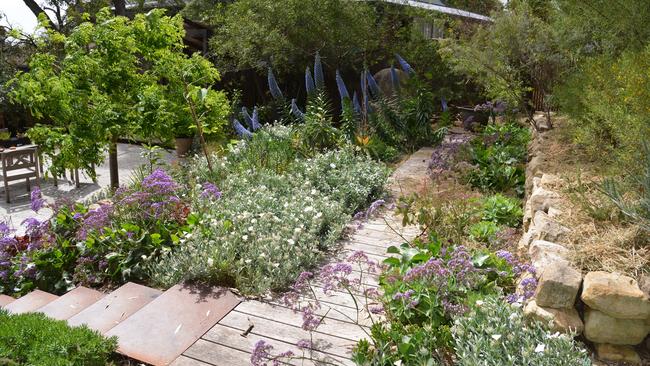
What trends are emerging in landscape design and what are your predictions for 2022?
Covid and community awareness of climate change require a rethink to how we, as landscape architects, design outdoor space. Climate action is not negotiable. Communities demand it and, to be fair, governments have responded. There’s a heightened awareness of the importance of our public realm, (and that includes gardens), to the planet’s health and our own physical and mental health. People are wanting to be outdoors more. They value the difference tree planting makes to city temperatures. Gardens are an important part of a healthy and safe environment. They contribute towards the liveability of our city and its attractiveness as a place to seek employment and raise our kids. Gardens that look neat and tidy are okay but, to me, they are not enough.
Why is landscape design and urban greening so critical in today’s society?
I support urban infill for the many advantages it brings, but the balance between a green, healthy, safe, and environmentally secure city and development has swung too much towards relying on government to compensate for the increase in temperature and resultant costs to individual householders. We need to be smart and take advantage of every opportunity to plant a tree or create the green spaces that people, post Covid, want. We also need to plant larger trees in Adelaide to obtain the tree canopy – you can notice the difference walking down Frome Road where a dense tree canopy shades the street and encourages people to walk. There’s no one single solution – we need multiple ways of greening our city; underground overhead power lines so larger street trees can be planted, small pocket parks on busy road intersections, actively manage our parklands and reserves, replacing smaller, inappropriate trees with larger species that add to the tree canopy, revegetate our river and creek corridors with native vegetation that create biodiversity corridors, design new suburbs with wider medians and verges to give room for larger street trees, encourage guerrilla gardens that occupy leftover spaces.
LEE GRAY, Lee Gray Landscape Design
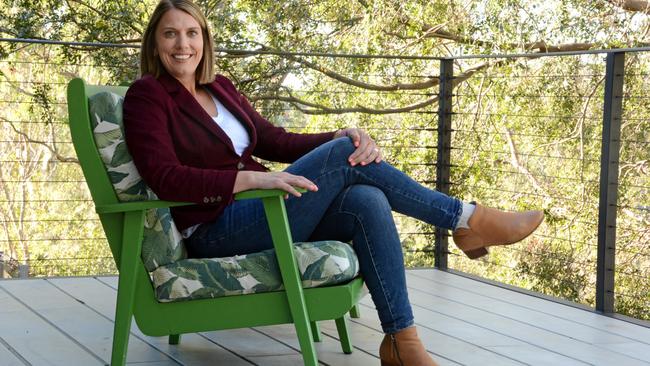
What drew you to the industry?
I initially developed a love for design and architecture by helping my father build and landscape our family home. As a little girl you would have found me pruning roses, repositioning pots and mowing lawns. I would also spend school holidays on a dairy farm where I was encouraged to pursue an education in horticulture.
After 20 years working as a designer for several landscaping companies, I decided that I would like to start my own studio, and haven’t looked back.
What do you most love about your work?
I thoroughly enjoy working with homeowners to develop a garden that suits their lifestyle and dreams. I love that I can draw on my horticultural, costing and construction experience to help clients design their perfect garden.
I love that a single day could involve meeting homeowners to brainstorm design ideas, visiting construction sites to admire gardens being installed, and then back in the designing studio. The wide variety of work and connecting with many talented people make it a dynamic and creative career.
What is your favourite residential project and why?
Similar to the question “Who is your favourite child?”, I have many favourite projects but all for different reasons.
I was recently meeting a client whose garden was installed a year ago, and her children were recounting to me stories of how popular their new garden was with their school friends. They all loved playing among the stepping stones and playing chasey around the silver birch.
Another favourite was having a meeting where a client cried over memories (that were) bought back when she stepped through her garden. She described how the smells and textures reminded her of the flowers and fruit of her grandmother’s home.
What trends are emerging in landscape design and what are your predictions for 2022?
Over the past two years we have all spent more time at home, with our attention focused on the family and immediate surroundings. Clients are spending more time considering landscaping projects with the aim of turning their home into a sanctuary. A sanctuary could be a recreation of grandma’s garden, while others draw on memories of holidays with family and friends. For others it may mean clean lines, warm material tones, and a relaxing space for contemplation such as an alfresco area.
Why is landscape design and urban greening so critical in today’s society?
Viewed from a purely practical view, softening our built environments with landscape and planting elements is an essential component to the functionality of a space. A well-designed landscape is like adding an extra room to your home and is a reflection of the owner’s lifestyle and personality. With stress and anxiety common in today’s society, a well-designed landscape also provides calm and serenity amid the chaos of everyday life.
CHANELLE OCKENDEN, Husk Projects
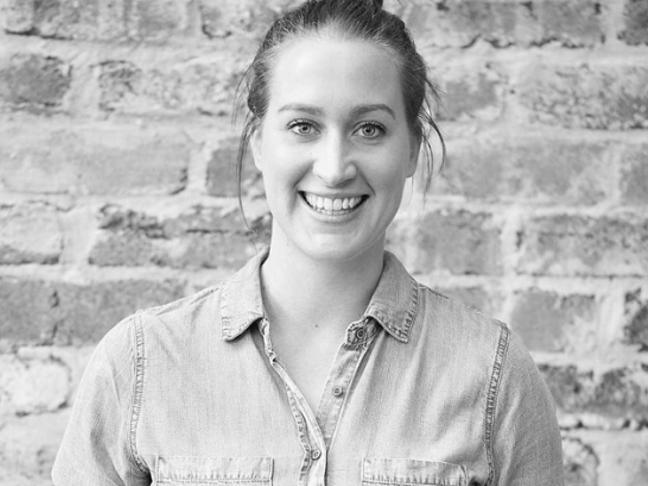
What drew you to the industry?
I actually started out studying interior design but quickly realised that my love of creativity and design was intended for exteriors and plants. I then moved into landscape design and haven’t looked back
What do you most love about your work?
I love helping clients realise the potential of their outdoor spaces and allowing them to be able to enjoy their gardens in a way they couldn’t before.
What is your favourite residential project and why?
My favourite project at the moment is this residence in McLaren Vale. The home is a new build on a hammerhead block, but as soon as you enter the garden you feel you are in a world of your own. The client wanted very low maintenance, so there is no lawn and the garden is full of Australian natives and succulents. I love how the native grasses dance in the wind.
What trends are emerging in landscape design and what are your predictions for 2022?
My predictions for 2022 are wholesome gardens – meaning low maintenance, low input for big return. Incorporating lots of edibles and functional spaces for entertaining. Everyone is entertaining more at home and wanting to spend more time nestled within nature.
Why is landscape design and urban greening so critical in today’s society?
Temperatures are rising, water is sacred, sustainable living is where we need to head for the future of our planet and ensuring the right species are planted for our Mediterranean climate. As the population grows and urban space becomes limited it’s more important than ever to make the most of our outdoor spaces using smart, innovative design and sustainable planting. The greening of Adelaide suburbs is essential to ensuring our society is kept happy and healthy for future generations.
ALEX GAME, Landskap Design
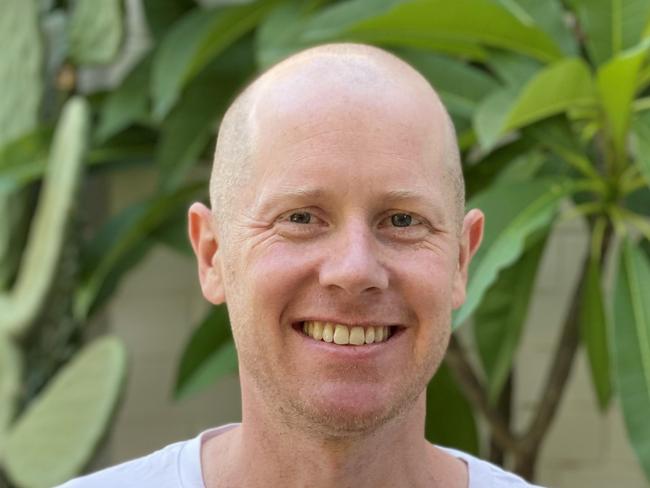
What drew you to the industry?
I started mowing the family lawn for pocket money. That then lead me to wishing I could one day be the next Les Burdett (ex-Adelaide Oval curator). I soon realised this probably wasn’t the perfect job for my fair complexion. I wasn’t interested in medicine as I saw how hard my dad worked, not realising that it was him, not medicine, that drove the long hours. Law sounded almost as dry as commerce, so I somehow landed on architecture. Then, halfway through my degree, I realised I could extend the course by a year by combining landscape architecture. I haven’t looked back since.
What do you most love about your work?
I love that even though we’re a small team, we get to work on so many varied projects and collaborate with some great architects. Our practice is very fortunate and not one project is the same. We’re working on everything from small city courtyards to heritage-listed estates, new wineries, all the way up to major urban developments. Landscape architects don’t need large teams to deliver big projects.
What is your favourite project and why?
I’ve been incredibly lucky to have worked on some amazing projects, from Adelaide Oval to a new Art Gallery in Vancouver, and a house on Grand Designs, but my favourite projects are the ones embraced by the community or clients. To that end, my own house is my current passion project. This is our long-term home that is designed to adapt and grow with us. We can plant a small tree and watch it grow. I can test out new materials, plants and ideas without the fear of failure.
Some of my favourite residential projects since starting the practice are the Millswood House and the Jacaranda House in Erindale. I’m loving watching the gardens grow and evolve.
What trends are emerging in landscape design and what are your predictions for 2022?
The past two years has brought back the importance of home and how vital the garden is to this sense of place. People are embracing productive trees and plants, and I think that next phase will be a transition to more wild gardens that are allowed have a life of their own. These gardens will be more seasonal, have a greater depth of biodiversity and encourage people to get their hands dirty.
Why is landscape design and urban greening so critical in today’s society?
On a macro level, Adelaide has one of the lowest tree canopy coverage rates in Australia, and we’re now seeing how unliveable some of the new suburbs are becoming during prolonged heatwaves. Increased urban greening can assist in reducing the urban heat island effect and will improve social and community health. It should be a no-brainer for the entire city.
On a micro level, we need to make our private gardens and developments work harder to provide more greening. Everyone should have access to a garden and no matter what size, our own gardens should be as important as the houses themselves. A great garden will provide wide-ranging benefits beyond the property. For me, gardening is the best free medicine going around.
KATE WHITELOCK, Garden Art Design
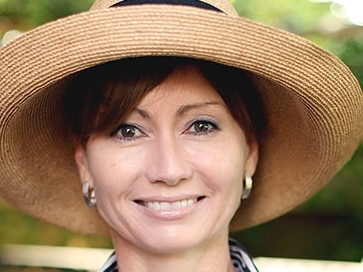
What drew you to the industry?
Simply, a wholehearted love of plants and an attraction to hand drawn garden plans, and a sense of kinship with the people who work in the horticulture and landscaping industries. Also, the opportunity to work in the marvellous older, rambling gardens of Adelaide with space for children, productive gardens and wildlife.
What do you most love about your work?
The wonderful clients I am privileged to meet with every day, who invite me into their homes and gardens, and the large amounts of solitary time spent drafting plans. Also, just pottering in gardens looking at plants.
What is your favourite residential project and why?
Dulwich House stands out due to the stature, beauty and presence of the house and the sheer size of the garden so close to the CBD - it is a delightful, happy place to be. As a recent project it is still young, but it will develop into a garden of abundance and colour, with a tremendous selection of interesting plants. It is also a favourite due to the wonderful warmth and vision of the owners. I was privileged to work with Hurren Architects (who have a rare skill with heritage buildings, and who designed the garden pavilion) and Piccadilly Landscapes, who built the garden.
What trends are emerging in landscape design and what are your predictions for 2022?
A desire for lush, semi-tropical plants and also a renewed interest in modern natives. Fluid, curved layouts with a sense of sanctuary. Productive plants and trees distributed through the garden rather than in separate areas. A longing for authenticity and simplicity.
Why is landscape design and urban greening so critical in today’s society?
Gardens are often all we have to reduce the frequent banality of modern architecture and urban development. Our wellbeing is dependent on plants, and our individual gardens are our opportunity to make a green contribution towards the city in which we live. We can create gardens where birds, insects and lizards choose to be – happy, relaxing places that reduce our stresses. I am angered every day to see the rapid demise of Adelaide’s famed beauty and liveability due to the rampage of appalling developments and unimaginative, unsustainable “architecture” (with a minimum of green space) that is supported by the state government – why is “growth” like this good?
TOM EASTON, Easton Design Studio

What drew you to the industry?
I’ve always had an interest in the outdoors and design. Having initially studied environmental science, then working as a landscaper, I was always thinking about the decisions and creative thought that went into the landscape design process. As soon as I dipped my toe in the world of landscape design and learned about the incredible tools that are available for visual representation in both 2D and 3D, as well as the endless possibilities of the plant world, I was hooked.
What do you most love about your work?
Every project is different, with it’s own parameters, challenges and opportunities. Once we’ve launched into the design phase and come up with a unique solution to the client’s brief, our favourite part of the process is meeting and presenting it to our clients. We love seeing their response as we run through the various elements and they can clearly see how it all fits together. The next best feeling is at the end of the construction process as all of the finer details are finished off and then the garden begins to establish and flourish.
What is your favourite residential project and why?
We recently designed a 15m x 4m pool, spa and surrounding landscape for an environmentally conscious winemaking family in McLaren Flat. The clients were incredibly easy to work with and gave us a lot of creative freedom, and the resulting landscape, built by Elite Outdoor Design and Construct, is a versatile space to swim laps or relax and appreciate the view. The choice of materials and plant palette blend seamlessly into the surrounding area and add a contemporary flair to an ecologically driven pool and landscape.
What trends are emerging in landscape design and what are your predictions for 2022?
We’re seeing the impacts of the last couple of years continue with a lot of clients asking for lush, green garden spaces with multiple areas to sit and enjoy their own environment. As travel has been difficult, many people are looking to re-create this feeling of escape at home. We’re also seeing greater intrigue in contemporary Australian style gardens, including the use of more native plant species and sustainable materials, along with a small shift away from the ‘no maintenance’ mantra that we have heard in the past as clients want to spend more time at home and in their gardens.
Why is landscape design and urban greening so critical in today’s society?
Well-considered outdoor spaces are extremely important as our society adapts to a slew of social and environmental pressures. Urban greening can reduce the impacts of a warming climate by cooling cities, providing shade and filtering pollution. At home, well designed gardens with ample plant life can reduce stress, encourage exercise and provide a place to relax and enjoy time with friends or quarantine alone.
AMANDA BALMER, Wax Design
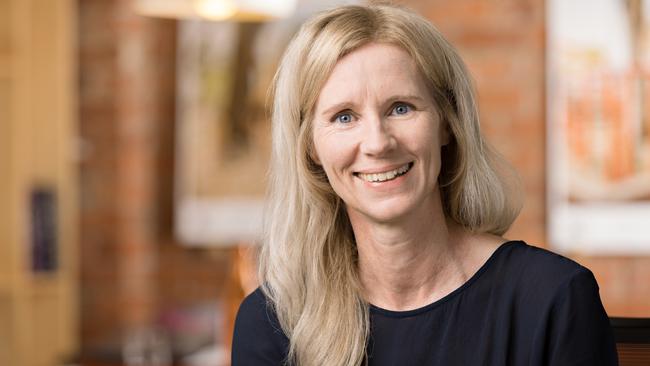
What drew you to the industry?
I believe in creating landscapes that bring joy to people and generate opportunities to connect people with nature. In establishing a landscape architectural firm, I felt I could facilitate a greater level of positive change as a steward of my own decision-making.
Working with natural living elements constantly remind me that I am not in control but rather the facilitator of an outcome, as landscapes can take years to develop and to provide an enduring legacy for others to experience.
What do you most love about your work?
The opportunity to challenge the norm and do things differently, so that we might champion the important things like social benefit, the environment, creating equitable and inclusive spaces that celebrate the beauty of our natural environment. I find the greatest satisfaction when I see the joy of others using the spaces we have created. A great example is the Port Lincoln Special School. We have just completed a new playspace for the students, and the smiles on their faces as they bounce up and down for the first time on an outdoor trampoline in their wheelchair is priceless.
What is your favourite residential project and why?
My favourite residential project is one in Maylands, because it reflects the historic vernacular of the sandstone building facade to the front garden and gestures to the nature of the new contemporary Troppo extension to the rear.
The garden successfully accommodates the current lifestyle of all members of the family, and I look forward to it evolving into reflect their future needs as the dynamics of the home change over time.
The feature Acacia tree adjacent to the new timber deck was retained, which when flowering in autumn provides a riot of yellow in contrast to the layers of green in the surrounding garden. The beautiful stone-clad water trough of the elevated pool is softened by floating papyrus and a row of white crepe myrtles under planted with silvery licorice plant, which leads to the lawn area which is large enough for the children to play.
What trends are emerging in landscape design and what are your predictions for 2022?
I always feel challenged by this question. The majority landscapes we design take 30 to 40 years to mature or more, so I try not to focus on what is ‘trending now’, rather I try and apply focus to embedding enduring design principals to facilitate legacies that will perform in the long term.
Why is landscape design and urban greening so critical in today’s society?
As we all know, our planet is under stress and our natural resources need to be nurtured, protected and championed if we are to make progress in slowing and adapting to climate change. Landscape architecture and urban greening are no longer ‘nice to have’. They are essential pieces of infrastructure to reduce heat island effect, improve air quality, preserve nature, provide biodiversity and habitat value, reduce pressure on stormwater infrastructure and clean the air. There are also numerous positive influences on people’s state of mind, more green spaces correlates with better mental health and green open space provides greater opportunities for recreation, relaxation and socialisation.
LANDSCAPE TECHNIQUES
JOSH HOOPER (director)
BRAD HUTCHINSON (Landscape designer)
LUKE KLUSKE (Landscape Architect).

What drew you to the industry?
We love the outdoors; from built forms, architecture to plant life, we take pride in bringing these elements together to create custom designs that further enhance the property’s architecture and client’s lifestyle. The continued evolution of the design industries, styles and climatic changes makes landscape design a constantly evolving and challenging career that we love being a part of.
What do you most love about your work?
The constant boundaries being pushed and, like any design industry, styles forever changing means what was once old is eventually new again; plus always feeling the need to stay current. We enjoy the reward of taking our clients brief and developing it further to a design that exceeds their original ideas plus complementing their residence and enhancing their lifestyle.
What is your favourite residential project and why?
Every projecr, for us, has a unique element or design feature that is memorable for us. When we get a chance to push design, construction and project constraints, this creates something really special. Our Lockleys and Millswood projects, for instance, showcase this to the highest level with custom concrete and steel elements, softened by sophisticated plantings to further enhance the surrounding architecture and, most importantly, create a unique space for the family.
What trends are emerging in landscape design and what are your predictions for 2022? We foresee the use of locally-sourced and Australian made materials becoming imperative in our industry, in response to current and predicted future material shortages and supply issues. This has made us further explore the market and rethink traditional material selections and techniques. We find this critical at the design stage as this ensures the original design intent has no restriction during the construction phase. Using proven materials like concrete, natural stone, steel and hardwood timber with sound design practises ensure our designs remain timeless.
Why is landscape design and urban greening so critical in today’s society?
With families spending more time at home and needing to maximise their property size, having a well-designed outdoor space that uses the full potential and serves multiple functions for both children and adults is imperative. Whether it be soaking up the sun by the pool, cooking with the family outside or simply playing with a dog on the lawn, so many memories are created outside and we believe it’s our responsibility to play a hand in that.
*Highly-respected landscape designer Virginia Kennett kindly declined to participate in this feature and instead nominated Lee Gray.



